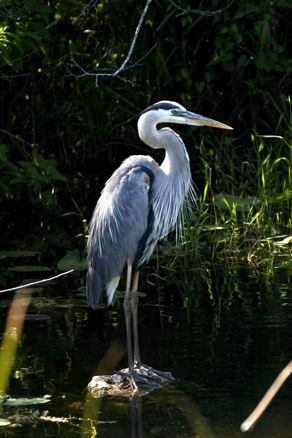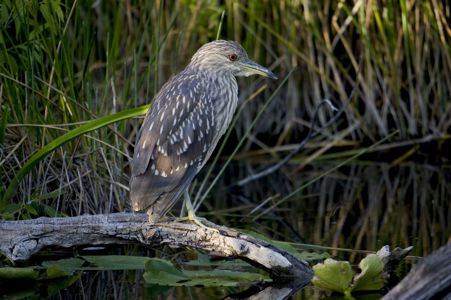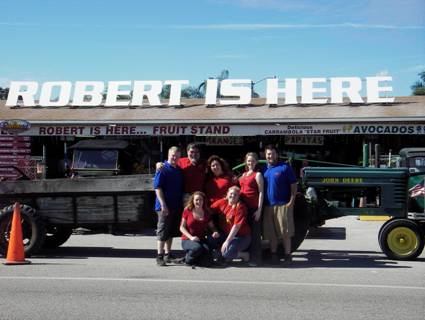 Florida’s Everglades National Park has been damaged by urban pollution over several decades. In light of two promising environmental restoration projects, Lynn Langway investigates active adventures and scenic beauty in an underappreciated American national park.
Florida’s Everglades National Park has been damaged by urban pollution over several decades. In light of two promising environmental restoration projects, Lynn Langway investigates active adventures and scenic beauty in an underappreciated American national park.
It’s a sparkling Sunday morning in the Florida Everglades, and 16 alligators have congregated for some serious sun worship at the base of the Shark Valley observation tower.
Nearby, two great blue herons squabble in a gumbo limbo tree, and a dozen scarlet-billed white ibis drill the mudflats. Overhead, a solitary red-shouldered hawk patrols the sawgrass prairie.
And on all sides, a primeval Florida landscape shimmers as far as the eye can see.
 Behold the real-life wonderland of Everglades National Park (ENP). Created in 1947, ENP protects about 1.5 million acres—roughly a fifth of the world’s only “river of grass,” a sluggish freshwater flow, 50 miles wide and inches deep, that seeps south from Lake Okeechobee to Florida Bay and the Gulf of Mexico.
Behold the real-life wonderland of Everglades National Park (ENP). Created in 1947, ENP protects about 1.5 million acres—roughly a fifth of the world’s only “river of grass,” a sluggish freshwater flow, 50 miles wide and inches deep, that seeps south from Lake Okeechobee to Florida Bay and the Gulf of Mexico.
Although its main entrance lies only 45 miles south of Miami airport, ENP remains an under-appreciated national treasure, drawing fewer than a million visitors in the last recorded year (Yellowstone, by contrast, lures about three times as many).
Zipping down to the Keys or out to the Miami beaches, too many travelers pause just long enough to skim park borders on an airboat tour (the noisy craft are banned inside ENP.) Others simply drive on by, mistakenly thinking there’s nothing but featureless swamp to see.
But there’s never been a better moment to explore this precious, imperiled place. For decades, the urban sprawl and agribusiness that surround ENP have diverted and polluted its water supply.
Now, the park has reached a pivotal point, with two promising restoration projects underway to stop and even reverse some damage. The state of Florida is trying to finalize a deal to buy back sugarcane fields upriver and restore more natural water flow. Meanwhile, the Federal government is proceeding—though slowly, given the recession—with a massive program to expand and revitalize ENP.
Find more American adventures in our National Parks travel section.
My husband and I decided to take a closer look last January during the dry season, when the park is at its peak. Daytime temperatures range from the mid-60s to the mid-70s, mosquitoes are minimal, and both wildlife and park programs abound.
 In five days, we paddled and rambled on remarkable eco-tours around all three of ENP’s main gateways—Everglades City on the western side, Shark River in the center, and Homestead on the east—with nary a mosquito bite.
In five days, we paddled and rambled on remarkable eco-tours around all three of ENP’s main gateways—Everglades City on the western side, Shark River in the center, and Homestead on the east—with nary a mosquito bite.
We encountered not only swamps, but also colorful back-country towns and a deserted island festooned with exotic seashells. What’s more, we found budget-friendly Florida. While the park’s only hotel, the Flamingo Lodge, is closed due to hurricane damage, we located attractive, affordable lodgings and good restaurants near the entrances.
Driving down from St. Petersburg, we spent our first night on Marco Island at the park’s western edge. Marco, 20 miles south of Naples, Florida, is the largest of the so-called Ten Thousand Islands, an archipelago of countless mangrove hammocks that lies partly inside and partly outside ENP; its sandy beaches offer a last good chance to swim in the Gulf.
Find out about more Budget Travel adventures here. And for more local adventures, don’t miss Peter’s radio show from Naples Florida.
We stayed at the charming Marco Island Lakeside Inn, grabbed fresh blueberry muffins for breakfast at Susie’s Diner, and headed 30 miles east to pick up maps at the Gulf Visitor Center in Everglades City.
 Our active adventures began 4 miles south on Chokoloskee Island the 32-acre shell-mound that’s home to Everglades Area Tours. This top-notch outfitter runs everything from kayak fishing to wilderness camping trips in the Ten Thousand Islands. We took a four-hour guided paddle that even beginners might enjoy. Naturalist Jason Sine loaded our ocean kayaks onto a motorized “mother ship,” dropped anchor in more remote waters, and led us out on a lively tour. The stable, silent kayaks allowed us to glide among the mangroves, stealing close to osprey nests and trees full of little blue herons.
Our active adventures began 4 miles south on Chokoloskee Island the 32-acre shell-mound that’s home to Everglades Area Tours. This top-notch outfitter runs everything from kayak fishing to wilderness camping trips in the Ten Thousand Islands. We took a four-hour guided paddle that even beginners might enjoy. Naturalist Jason Sine loaded our ocean kayaks onto a motorized “mother ship,” dropped anchor in more remote waters, and led us out on a lively tour. The stable, silent kayaks allowed us to glide among the mangroves, stealing close to osprey nests and trees full of little blue herons.
Three dolphins surfaced beside us for a race (they won). Stopping at uninhabited Rabbit Key, we strolled along the shore, where our guide identified scores of irresistible shells—Banded Tulips, spiky King’s Crowns, and more.
More nearby options in Off the Brochure Travel Guide: Miami, Florida.
We spent that night and the next in cheerful, spacious quarters at the Parkway Motel and Marina on Chokoloskee. This is the boondocks, and proud of it; the nearest drugstores, supermarkets, and high-rises are back in Marco.
 Still, there’s plenty to do. In downtown Everglades City, the Museum of the Everglades celebrates the fascinating history of this wild Calusa Indian territory, settled after the Civil War by a motley mix of bootleggers, plume-hunters, farmers and fisherman. The area boomed in the 1920s, when ad tycoon Barron Collier built the Tamiami Trail, US 41, which borders ENP and Big Cypress National Preserve to the north.
Still, there’s plenty to do. In downtown Everglades City, the Museum of the Everglades celebrates the fascinating history of this wild Calusa Indian territory, settled after the Civil War by a motley mix of bootleggers, plume-hunters, farmers and fisherman. The area boomed in the 1920s, when ad tycoon Barron Collier built the Tamiami Trail, US 41, which borders ENP and Big Cypress National Preserve to the north.
Another must-see is the Big Cypress Gallery, 28 miles east of town, which showcases the striking black and white nature photographs by artist Clyde Butcher, who’s often compared to Ansel Adams.
More travel ideas in Off the Brochure Travel Guide: Fort Lauderdale, Florida.
On Chokoloskee, don’t miss Smallwood’s Store. Built on stilts in 1906, this trading post is now a quirky museum, with wooden counters cantilevered for hoopskirts and a captivating jumble of antiques. Smallwood’s chief claim to infamy, though, is that local landowner Edgar Watson, a suspected serial killer, was gunned down by townsfolk right outside in 1910. That bloody incident inspired Killing Mr. Watson plus two other lyrical novels by Peter Matthiessen, which made perfect paperback companions on our trip.
 We were pleasantly surprised by multiple restaurant choices. For breakfast, we fueled up on overstuffed western omelets at the Backcountry Café (we passed on the gator nuggets.) Everglades City bills itself as “The Stone Crab Capital of the World,” and we feasted on the meaty crab claws at City Seafood, one of several fish market-restaurants. We sipped sunset cocktails on the Barron River verandah at the historic Rod & Gun Club; be sure to see the stunning lobby, with its highly-polished walls of pecky cypress.
We were pleasantly surprised by multiple restaurant choices. For breakfast, we fueled up on overstuffed western omelets at the Backcountry Café (we passed on the gator nuggets.) Everglades City bills itself as “The Stone Crab Capital of the World,” and we feasted on the meaty crab claws at City Seafood, one of several fish market-restaurants. We sipped sunset cocktails on the Barron River verandah at the historic Rod & Gun Club; be sure to see the stunning lobby, with its highly-polished walls of pecky cypress.
Our most memorable meal was dinner at the riverfront Camellia Street Seafood Grill; while a tuneful duo played old-school country music, we savored she-crab soup made with local blue crab, tasty blackened grouper and home-grown vegetables.
On day three, we explored the Shark Valley gateway, 45 miles east. Park Ranger Emma Johnson, our guide for an outstanding two-hour tram tour, allowed that ENP was “a little more subtle” than some national parks.
Find an outdoor adventure near you in our Eco-Travel section.
“The beauty doesn’t grab you immediately; it takes a little effort,” she said, as the open-sided tram glided slowly along a 15 mile loop road to the 65-foot observation tower. Big birds—egrets, herons, ibis—took off and flapped overhead like so many planes at a busy airport, while Johnson pointed out a stack of Red-bellied turtles, a litter of yellow-striped baby alligators and their watchful mom.
 Rental bikes are available, and we saw several families cycling the roadway. We later walked part of it—very carefully, since we’d counted a total of 55 gators in the neighborhood. While the National Park Service reports “no recorded alligator interactions with humans” in park history, visitors are encouraged to stay at least 10 feet away.
Rental bikes are available, and we saw several families cycling the roadway. We later walked part of it—very carefully, since we’d counted a total of 55 gators in the neighborhood. While the National Park Service reports “no recorded alligator interactions with humans” in park history, visitors are encouraged to stay at least 10 feet away.
Our final destination was Homestead, 49 miles southeast, the gateway to the park’s vast interior. At the Ernest Coe Visitor Center, you can sign up for ranger-led swamp slogs, morning bird walks or starlight strolls and watch intriguing nature films. But do not fail to drive the main park road from here all the way down to Flamingo, 38 miles southwest. Several observation platforms and ponds are worth a stop en route.
At the Anhinga Trail boardwalk, 4 miles along, we noticed numerous anhinga birds spreading their elegant wings to dry, as well as four nests full of wriggling pink and yellow chicks.
Want an alternative to Everglades National Park? Don’t miss America the Beautiful: Five “Hidden” National Parks. Or listen to this radio interview with Sabrina Diaz, park ranger for Florida’s Everglades, Biscayne and Dry Tortugas National Parks.
The road runs out in Flamingo, at the edge of the pale aquamarine waters of Florida Bay. Despite the name, you almost certainly won’t see flamingos here—they’re not native to Florida. Odds are good, however, that you will see roseate spoonbills, even prettier in pink, vacuuming up invertebrates in Eco Pond with their comical spoon-shaped beaks.
You can hike, camp, take a sunset cruise or rent a boat; we opted for a four-hour canoe trip with another knowledgeable ranger. Threading the mangrove maze, we startled a young bald eagle into flight, and spotted two of the park’s 15 endangered species: the mighty black and white wood stork, and a 13-foot American crocodile, which is narrower, paler, toothier, and far more rare than his alligator cousins.
 Back in Homestead’s restored downtown we joined the festive crowd at El Toro Taco for excellent corn tortillas and chile rellenos. But our quintessential taste of the Everglades was the extraordinary key lime milkshake, thick as ice cream, whipped up at Robert is Here Fruit Stand. The tale of how this exotic fruit store got its odd moniker is pure, old-timey Florida, and the owner swears it’s even true: One day in 1959 when he was just a lad of 6, he set up a little stand, but failed to sell any of his farmer-Dad’s produce. Then his Pop came up with posters proclaiming “Robert is Here.” Business took off, and here Robert has been, selling—and telling—ever since.
Back in Homestead’s restored downtown we joined the festive crowd at El Toro Taco for excellent corn tortillas and chile rellenos. But our quintessential taste of the Everglades was the extraordinary key lime milkshake, thick as ice cream, whipped up at Robert is Here Fruit Stand. The tale of how this exotic fruit store got its odd moniker is pure, old-timey Florida, and the owner swears it’s even true: One day in 1959 when he was just a lad of 6, he set up a little stand, but failed to sell any of his farmer-Dad’s produce. Then his Pop came up with posters proclaiming “Robert is Here.” Business took off, and here Robert has been, selling—and telling—ever since.
We spent our last two nights at a well-kept Holiday Inn Express in Florida City, one of several chain motels close to the ENP entrance. But the National Park Service hopes to rebuild Flamingo Lodge within the next few years—and whenever they do, we’re bound to come back and go deeper into this magical wilderness.
By Lynn Langway for PeterGreenberg.com. All photos courtesy Rodney Cammauf, National Parks Service. Lynn Langway is an award-winning editor, writer and journalism teacher. Her articles about travel, business and lifestyle topics have appeared in The New York Times, Washington Post, Money, The Nation, and other publications. Visit Lynn on the Web at www.lynnlangway.com.
Related links on PeterGreenberg.com:
- Eco-Travel section
- America the Beautiful: Five “Hidden” National Parks.
- National Parks Travel section
- Interview with Sabrina Diaz, park ranger for Florida’s Everglades, Biscayne and Dry Tortugas National Parks – Miami Radio Show
- Peter’s radio show from Naples, Florida
- Off the Brochure Travel Guide: Fort Lauderdale, Florida












